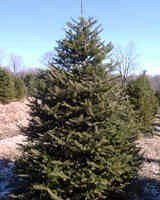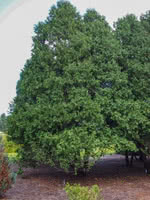Mon-Fri 9am - 5pm Mountain time
Canaan Fir vs Eastern White Cedar (Arborvitae)
Abies balsamea phanerolepis
Thuja occidentalis
CUSTOM GROW
Canaan Fir, which is closely related to Balsam Fir, is known for its open-growing patterns and strong branches.
Canaan Fir is highly adaptable to many soil conditions and thrives in both shaded areas or direct sunlight. It is commonly used for Christmas tree farming or reforestation.
This rugged landscape tree remains green year-round.
Eastern White Cedar is a slender growing conifer often used as a decorative tree or a hedge. This tree is an effective privacy screen even in winter and a great long term solution to urban crowding or a drab yard.
Canaan Fir Quick Facts
Eastern White Cedar (Arborvitae) Quick Facts
In row spacing: 3 m (10 ft)

